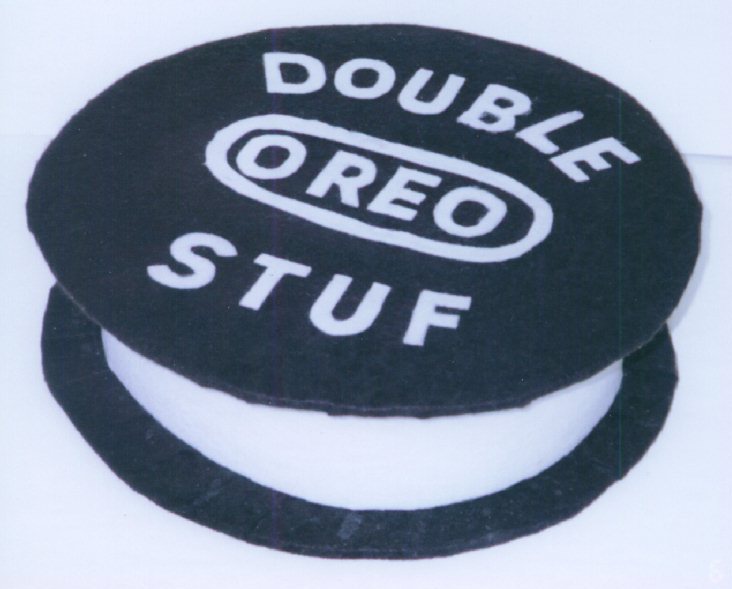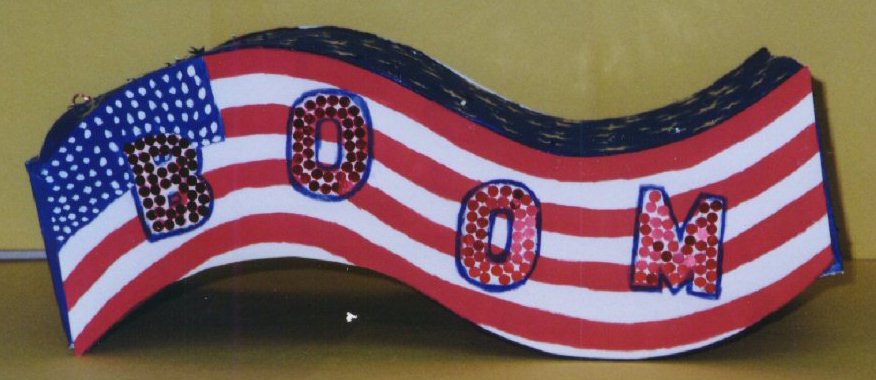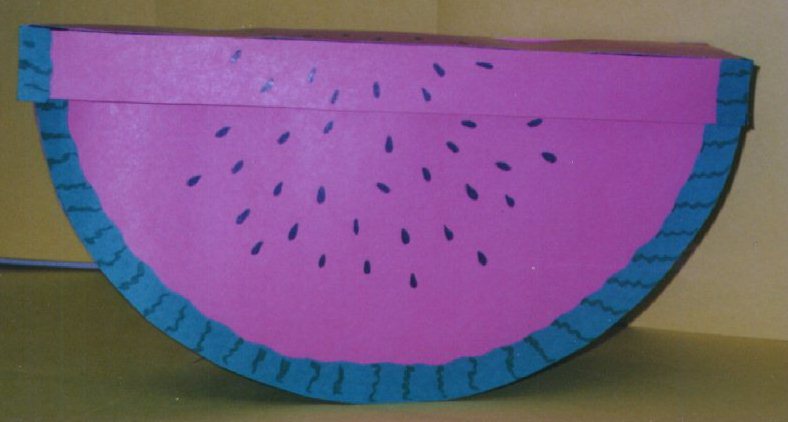
The
Design a Deluxe Container project encourages both written and oral communication
using terminology from geometry. It allows students to creatively design and
figure the volumes of standard and non-standard solids. It ties geometry to
business as it studies package efficiency, marketing strategies, product costs,
and profit.
Materials
 You'll
need to have at least 8 spheres to be able to check to make sure that they all
fit when grading the final project. I have made changes from year to year as to
how many spheres need to fit into the container. I've used 5, 6, and 8 spheres
to promote more creativity. These spheres are nothing but plastic ornaments that
can open for easy storing. They are available at a much reduced cost at craft
shops right after the holidays. Stock up on them when you find them. They do
break and need to be replaced from year to year! You'll
need to have at least 8 spheres to be able to check to make sure that they all
fit when grading the final project. I have made changes from year to year as to
how many spheres need to fit into the container. I've used 5, 6, and 8 spheres
to promote more creativity. These spheres are nothing but plastic ornaments that
can open for easy storing. They are available at a much reduced cost at craft
shops right after the holidays. Stock up on them when you find them. They do
break and need to be replaced from year to year!
Each
team is allowed only one sphere at a time, to encourage accurate measurements and
good geometry reasoning during the construction phase. I suggest that you do not
allow the spheres to be taken from your room if the measurement phase is
important to you, because students will devise clever ways to obtain enough spheres to
test their container before grading. Since most of the actual construction takes
place in teams outside of the classroom, I encourage groups to be creative in
their materials. Several teams have used papier mâché, old cereal boxes, poster
board, scrap cardboard, fiberglass, and foam core board to create their
containers. There is some shrinkage that occurs when papier mâché and fiberglass
containers dry. You probably should mention this to students when discussing
materials they can use. The containers must have a set volume so things like
paper bags or nets will not work for this project.
OPTIONAL ACTIVITY: There is a wonderful activity in the
March, 1997 Mathematics Teacher Magazine published by NCTM titled
"'Can' Do" by Claudia Carter. It allows students to really explore
packing cylinders and the concept of efficiency. This activity has three
worksheets ready to copy and use in the classroom. It is a great exploration
prior to the assignment of this project.
Equipment
 Depending
upon the school where you work and the students in your classes, you may need to
have access to computers with printers and/or a video camera with video tapes.
Students use computers to word process their proposals to the boss. Access to a
computer either at home or at school stresses the need for neat looking reports in the business world. Several teams have gotten very creative and
actually gotten permission from a store to videotape on-site, but even the
videos shot at school or at home have been an awesome part of the project. The
teams can schedule times to videotape their commercials. Each team will need
very short videotapes to record on, but realize that it may take several times to
get a good commercial - just like in the movies! I do not recommend making one
big video until after the final films have been finished. (One team could end up
taping over another team's commercial by accident.) Depending
upon the school where you work and the students in your classes, you may need to
have access to computers with printers and/or a video camera with video tapes.
Students use computers to word process their proposals to the boss. Access to a
computer either at home or at school stresses the need for neat looking reports in the business world. Several teams have gotten very creative and
actually gotten permission from a store to videotape on-site, but even the
videos shot at school or at home have been an awesome part of the project. The
teams can schedule times to videotape their commercials. Each team will need
very short videotapes to record on, but realize that it may take several times to
get a good commercial - just like in the movies! I do not recommend making one
big video until after the final films have been finished. (One team could end up
taping over another team's commercial by accident.)
Make
sure that that teams use a video format in which you are able to preview the videos.
VHS-C videos will require an adapter to be able to play them in a standard VCR.
I have students present their video tapes (make sure to preview them first!) to
the class along with their final container at the end of the project. They have
fun explaining the geometry of their containers, their product, its efficiency
and its cost.
|